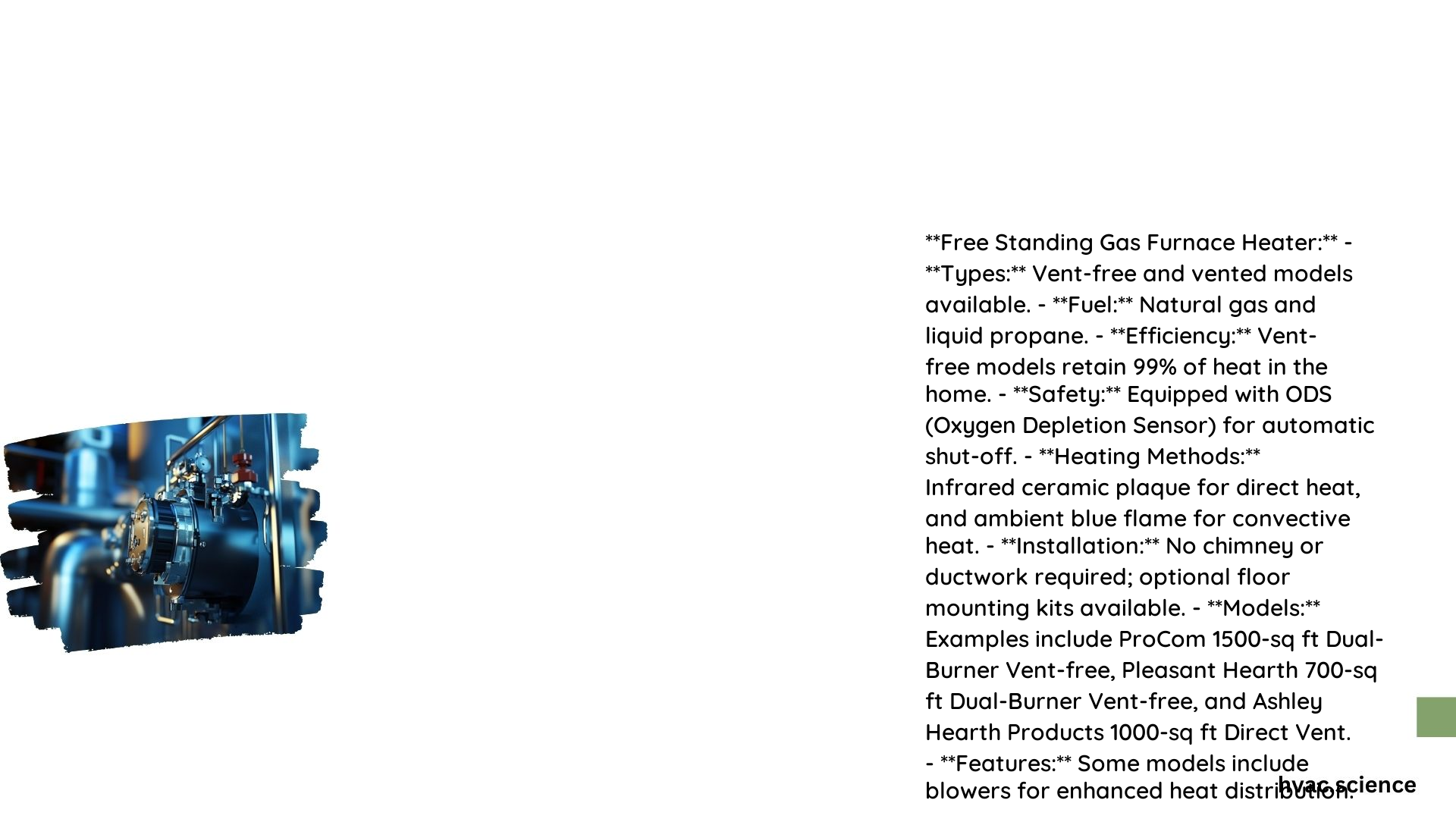A free standing gas furnace heater is a self-contained heating unit that can be placed in a room or space to provide warmth without the need for a central heating system. These heaters are popular for their efficiency, convenience, and ability to target specific areas that require heating. To ensure the safe and optimal performance of your free standing gas furnace heater, it’s essential to understand the operational requirements and maintenance best practices.
What are the Operational Requirements for a Free Standing Gas Furnace Heater?
How do I Activate and Use a Free Standing Gas Furnace Heater?
- A free standing gas furnace heater does not need to be set to ‘on’ at all times. It should be activated only when heating is necessary to conserve energy and ensure safety.
- Most models come with controls such as on/off switches or thermostats that allow you to regulate the heating as needed.
How Important is Ventilation for a Free Standing Gas Furnace Heater?
- Proper ventilation is crucial to avoid the accumulation of combustion gases.
- Direct-vent models, which are more efficient, require a venting system that connects to an outside wall to safely exhaust combustion products.
What are the Maintenance Best Practices for a Free Standing Gas Furnace Heater?

How Often Should I Have My Free Standing Gas Furnace Heater Inspected?
- Have the heater inspected annually by a qualified service technician to ensure it operates efficiently and safely.
What Safety Checks Should I Perform on My Free Standing Gas Furnace Heater?
- Combustion Chamber and Burner: Check for cracks, holes, or signs of wear. Ensure the combustion chamber and burner observation windows are clean and free of damage.
- Gas Line: Verify there are no gas leaks and check the gas connection according to the manufacturer’s instructions.
- Electrical Components: Ensure thermostats, sensors, and control devices have no exposed wires or damage.
How Do I Clean a Free Standing Gas Furnace Heater?
- Blower and Motor: Clean the blower scroll wheel and motor to maintain airflow efficiency.
- Heat Exchanger: Clean the heat exchanger to prevent soot buildup and ensure proper heat transfer.
- Venting System: Ensure the venting system is free from blockages, soot, or debris.
What Clearances and Installation Requirements Should I Consider?
- Clearances: Maintain the specified clearances from combustible materials. For example, a minimum of 1 inch from side walls, 2 inches from the floor, and 11 inches from the ceiling.
- Installation: Ensure the heater is installed by a qualified person or agency, following the manufacturer’s installation, operation, and service manuals. This includes proper air circulation around the heater and adherence to local codes and standards.
What Tools and Measurements are Needed for Maintaining a Free Standing Gas Furnace Heater?
- Tools: Use a vacuum cleaner or soft brush to clean the blower and motor. For more detailed cleaning, follow the manufacturer’s guidelines.
- Measurements: Ensure the minimum clearances are maintained as specified in the installation manual. For example, a direct-vent wall furnace requires specific venting measurements and clearances.
What Safety Considerations and Installation Requirements Should I Keep in Mind?
How Do I Safely Use a Free Standing Gas Furnace Heater Indoors?
- Ventilation: Ensure proper ventilation to avoid carbon monoxide buildup. Direct-vent models are safer as they exhaust combustion products directly outside.
- Clearances: Maintain specified clearances from combustible materials to prevent fires.
- Electrical Safety: Ensure all electrical components are in good condition and follow the manufacturer’s guidelines.
How Do I Safely Use a Free Standing Gas Furnace Heater in a Garage?
- Ventilation: Garages often have limited ventilation, which can be hazardous with gas heaters. Ensure adequate ventilation and follow local codes and manufacturer’s guidelines.
- Clearances: Maintain the same clearances as for indoor use to prevent fires and ensure safe operation.
- Combustible Materials: Keep the heater away from combustible materials such as gasoline, paint, or other flammable substances commonly found in garages.
Relevant Safety Considerations
- Carbon Monoxide Detection: Ensure a working carbon monoxide alarm is present in the area where the heater is used to prevent carbon monoxide poisoning.
- Supervision: Keep children and pets away from the heater to avoid burns or other injuries.
- Flammable Materials: Do not place clothing or other flammable materials near the heater.
